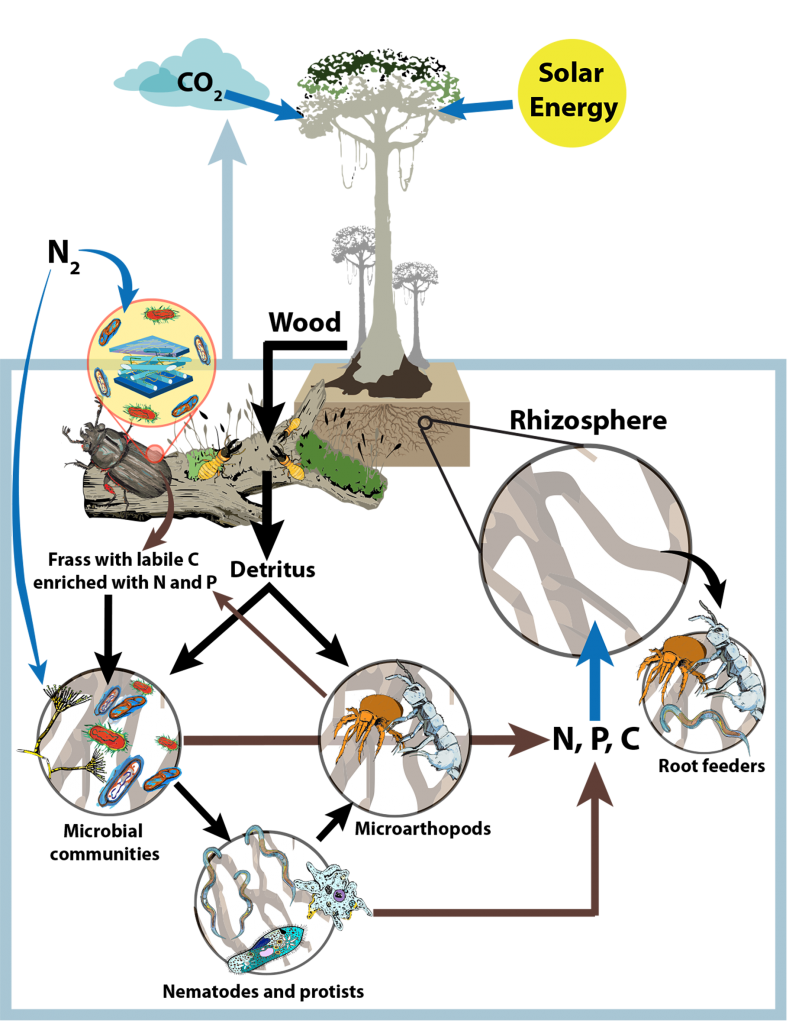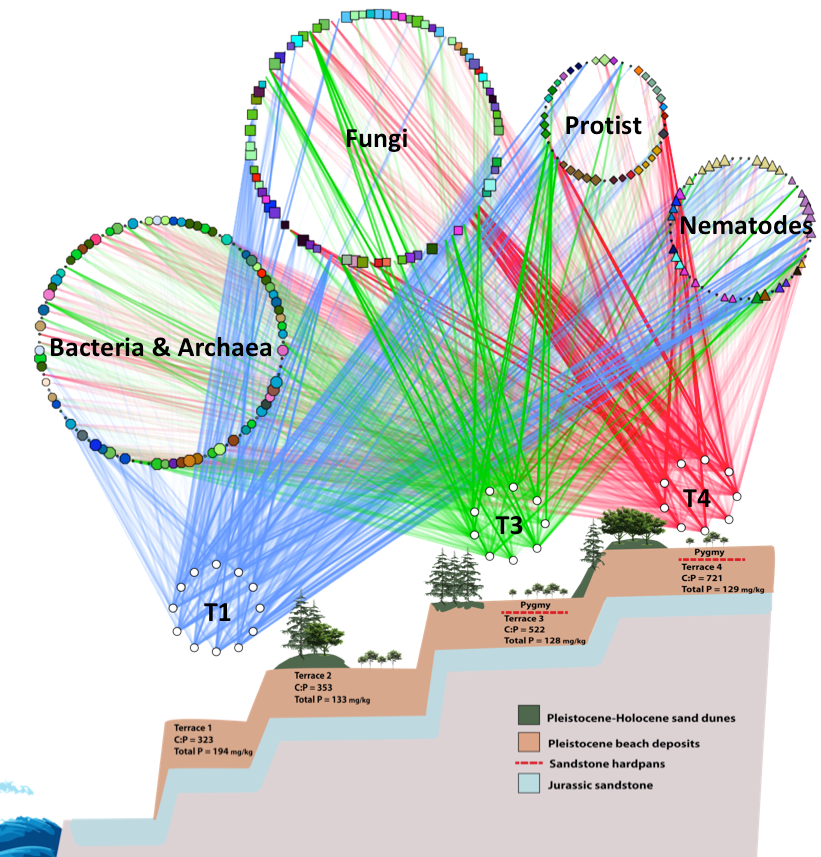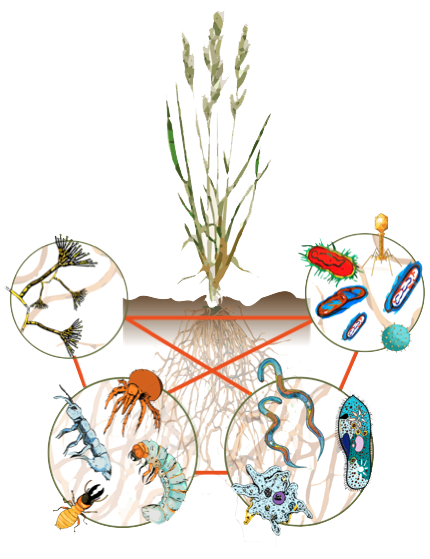
Soil can be described as a massive living entity with a similarly immense number of associated organisms where numerous populations of protists, nematodes, arthropods, plants, and their symbionts, represent critical biological compartments that “collaborate” to facilitate nutrient and energy transfer impacting all types of processes occurring in soil. However, little is known about how environmental stressors affect food web composition, trophic interactions, and the extent of their impact on ecosystem processes and resilience.
In this research topic, my aim is to characterize the contribution and connections of trophic nodes of different soil ecosystems to define the associations among trophic nodes and draft food-web models to analyze the ecosystem’s resilience to environmental change.
Food web response to soil environmental feedbacks
I am currently working on a natural observatory, the Jug Handle Ecological Staircase Observatory, consisting of numerous terraces of different ages (each a 100,000 years older than the previous one), each with different levels of available phosphorous that have resulted in drastic changes in vegetation. This natural observatory serves as a proxy to predict what may happen with the food web of overexploited soil systems with depleted nutrient levels. Here, we are characterizing the effect of the environment on the composition and activity of trophic nodes –from bacteria, archaea, nematodes, and protists, to arthropods and their microbiome.

Cross-kingdom interactions in the rhizosphere
The objective of the research presented here is to illuminate the contribution of viral, bacterial, archaeal, fungal, and other eukaryotic communities to carbon and nutrient cycling in soil by applying multi-omics approaches, stable isotope tracing, and field manipulations to the development of mechanistic network theory of material flow in the soil.
In all terrestrial ecosystems, numerous populations of organisms such as protists, nematodes, and arthropods interact with the soil’s free-living and plant-associated microbes, defining biogeochemical and nutrient cycling processes. To predict the responses of C and nutrient cycling to environmental change, it is important to recognize that these environmental processes are the result of the interactions of multiple groups of organisms that in concert shape an ecosystem and its processes.
We have optimized multiple approaches to characterize the belowground populations from all trophic levels in the rhizosphere of different grasses and we continue testing approaches to measuring their contributions to C cycling.
